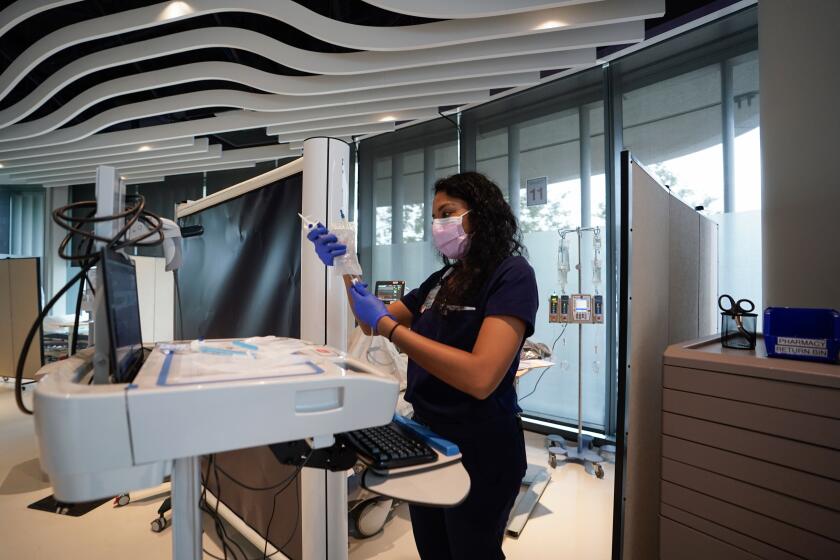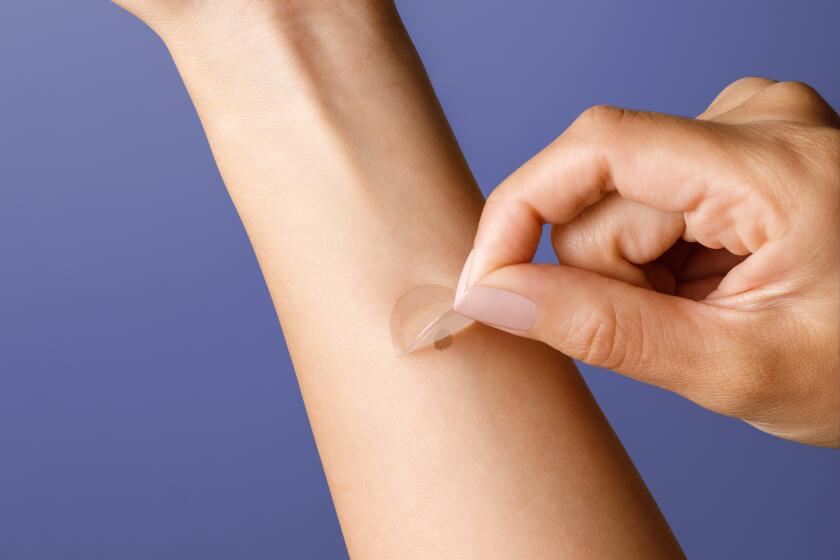Continuous glucose monitoring benefits type 2 diabetics
Continuous glucose monitoring benefits insulin-taking type 2 diabetics, according to a study released Monday.
Control of blood glucose levels improved with continuous monitoring in those taking multiple daily insulin injections, compared to those who monitor glucose by finger prick blood tests, the study found,
Published in the Annals of Internal Medicine, the study was funded by Dexcom, which supplied the continuous glucose monitoring, or CGM, devices. The San Diego company said it had no approval authority over the results. Go to j.mp/dexcomcgm for the study.
If the results are accepted by the medical community and insurers, Dexcom could greatly increase the CGM market. With a stock valuation of $6.3 billion, Dexcom is one of the biggest biomedical companies in San Diego County.
To date, the company has sold its CGM devices to those with type 1 diabetes, but they represent only 5 to 10 percent of the total U.S. diabetes population.
The study found that type 2 diabetics using the devices spent more time within the normal blood glucose range, compared to those who measured their glucose levels manually through a finger prick. Moreover, those using the system overwhelmingly adhered to it during the study period of 24 weeks.
A total of 158 subjects were tested in the study, split equally between those using the devices and a control group using manual finger pricks.
All type 1 diabetics require insulin. In addition, some of those with type 2 diabetes take insulin because other drugs aren’t effective enough, said David Price, M.D., a study author and Dexcom’s vice president of medical affairs. Of the approximately 6 million Americans who use insulin, about 5 million of them have type 2 diabetes, he said.
Both types of diabetes are characterized by insulin inadequacy, but it manifests differently.
Type 1 diabetics don’t make enough insulin to survive, so they require injections, either manually or through an insulin pump. Their main danger is injecting too much insulin.
Insulin reduces blood glucose, and if it’s brought down too low, patients go into hypoglycemia. Symptoms include hunger, sleepiness, weakness and unconsciousness, which can lead to injury or death.
Those with type 2 diabetes can’t adequately use the insulin they make. They are more endangered by glucose levels that are too high, or hyperglycemia. Over the long term, hyperglycemia can cause disabling conditions including nerve, retinal and kidney damage, and poor blood circulation potentially leading to foot amputation.
Dexcom’s G4 Platinum system was used in the research, called the DiaMonD study. The system supplies a blood glucose reading every five minutes. Control subjects tested their own blood glucose levels manually via finger prick at least twice daily.
The system contains three main parts. A sensor implanted just under the skin measures blood glucose levels. A transmitter connected to the sensor wirelessly sends the information. A receiver displays blood glucose readings. Users must calibrate the system every 12 hours with blood taken from a finger prick, comparable to what control subjects did.
In return, users get readings of blood glucose every five minutes, up to 288 times a day, Price said. The information helps users understand how their meals and lifestyle habits influence levels.
“You could see after a meal how rapidly your glucose is rising, you could see when it hits its peak,” Price said. “So you certainly have a great deal more information than you do when you’re just doing three measurements a day.”
Price said the study answered two important questions. One was, would people with type 2 diabetes actually use this wearable technology, which is novel for them?
“And it was a resounding yes,” Price said. “Almost all the time at the end of the study (patients) were using that, 93 percent, which was quite a surprise to us.”
The second question was whether those using the CGM system make adjustments to their lifestyle and medications to get better control?
Again, Price said, the answer was yes. Additionally, the most improvement was seen in the patients who had the worst control of their blood sugar levels.
Science Playlist


In a first, scientists rid human embryos of a potentially fatal gene mutation by editing their DNA

10 interesting facts about Mars

Kids can add years to your life

LA 90: SpaceX launches recycled rocket

Ocean temperatures warming at rapid rate, study finds
bradley.fikes@sduniontribune.com
(619) 293-1020
Get U-T Business in your inbox on Mondays
Get ready for your week with the week’s top business stories from San Diego and California, in your inbox Monday mornings.
You may occasionally receive promotional content from the San Diego Union-Tribune.








